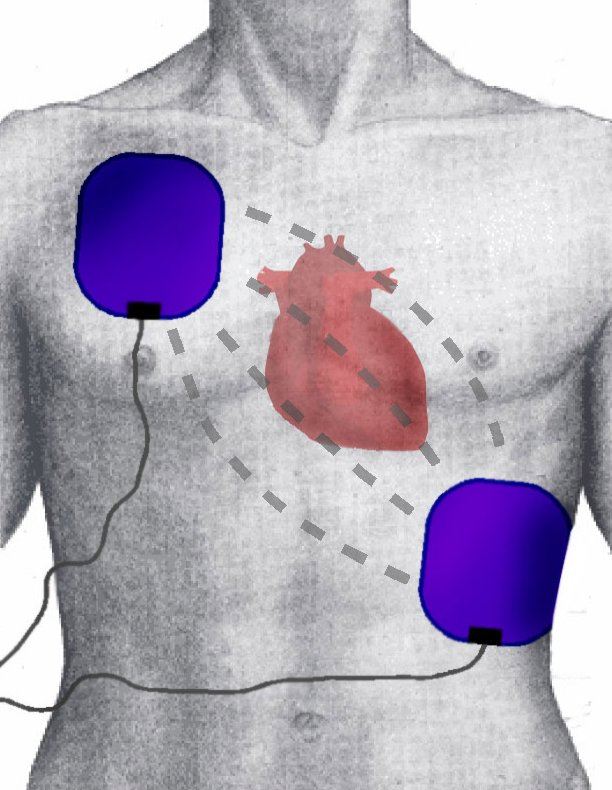AED
As a seller of AEDs (Automated External Defibrillator) and a company who have helped and participated in many charity events to educate and present local businesses, schools and public places with their own Defibrillator, there’s one thing we’ve picked up on: the untrained public are scared of AEDs.
Two things we’re actively trying to get across to the public, is the importance of defibrillators, as well as demystifying the fear factor that wrongly surrounds modern defibrillators.
Modern AEDs, whether it be fully automatic or semi-automatic are easy to use, harmless, affordable and more often than not the only way to save the life of someone who has suffered a sudden cardiac arrest outside of hospital.
How to use an AED
Modern AEDs are very easy to use; so easy in fact that even without any medical training whatsoever, a member of the public could save a life with first aid and an AED. The reason for this? They guide the user through every action, and for the most part act upon their own advice.
Here’s a little step by step guide, demonstrating what you should do, and how an automatic defibrillator works (If available at the scene), if someone has a sudden cardiac arrest (SCA):
1. Check to see if the victim is able to respond, or if they are breathing
It is important to check this, to see if the victim is actually in a sudden cardiac arrest and haven’t just suffered a less fatal problem such as fainting. If they are not breathing or responding, your first response should be to call help and call 999. Then, roll them onto their back, with their head up and airways clear.
2. Perform CPR until an AED is available, and if possible, have someone set it up whilst you perform CPR.
Taken from the NHS website, on how to perform CPR:
“1. Place the heel of your hand on the breastbone at the centre of the person’s chest. Place your other hand on top of your first hand and interlock your fingers.
2. Position yourself with your shoulders above your hands.
3. Using your body weight (not just your arms), press straight down by 5–6cm on their chest.”
Try to perform chest compressions at 100-120 chest compressions a minute.”
3. Once an AED arrives, turn it on and proceed to take off the shirt/top of the SCR victim and proceed to place the pads provided on the victim’s chest
It is important that the pads are placed in the correct location on the victim’s chest, and that the connection to the skin is clear and not blocked by hairs. Most AEDs come with a razor equipped to allow you to quickly shave the chest of the victim. Whilst this can help clear a space for the pads, most of them have good enough adhesive to stay on the victims chest.
Here is a diagram of where to place the pads:
4. Let the AED do the work, to analyse the heart rhythm. It will sound out instructions of what to do at this point.
The AED will then analyse the heart rhythm to see if a shock is required. A key feature of modern AEDs is that they will not shock is a patient does not need a shock.
5. If the AED say a shock is needed, then either press the button (on a semi-automatic defibrillator) to administer it, or listen for the automatic countdown (on a fully automatic defibrillator) and make sure everyone is clear of the victim.
Here lies the difference between fully and semi-automatic defibrillators. Fully automatic will detect is a shock is needed and begin a countdown until an automatic shock. Semi-automatic defibrillators will tell you a shock is required, and ask you to press the shock button.
It is important that you, and anyone around, stands back at this point.
6. If the shock was ineffective, continue to perform CPR until the AED instructs you what to do next, or when to next shock the patient
A lot of the time, one shock will not work on a sudden cardiac arrest patient – if not, continue to perform CPR whilst listening out for the AED to instruct you of what to do next.
Harmless
A lot of the fears of the general public we’ve spoken to come from worrying about harming someone, by using a defibrillator. This is a myth we want to stop dead in its tracks. A modern defibrillator will not shock unless a shock is needed. This is key to remember when using one, or if hesitating before pressing the shock button. The outcome of not pressing the shock button will always be worse than if you press it.
Affordable
Even the price on a modern AED isn’t scary. A few years ago, AEDs were much more expensive, and somewhat of a rarity in the public domain, but now they’re an affordable and lifesaving piece of kit that every office, public place, school and council should own.
To find out which AED unit or defib is right for your business and to shop our wide range of units, visit our Defibs & AED Units page today!
Related content:
- Defibrillator Cabinets
- Defibrillator Batteries, Chargers & Accessories
- Preparing for the World Cup
- The Complete Guide to Defibrillators


